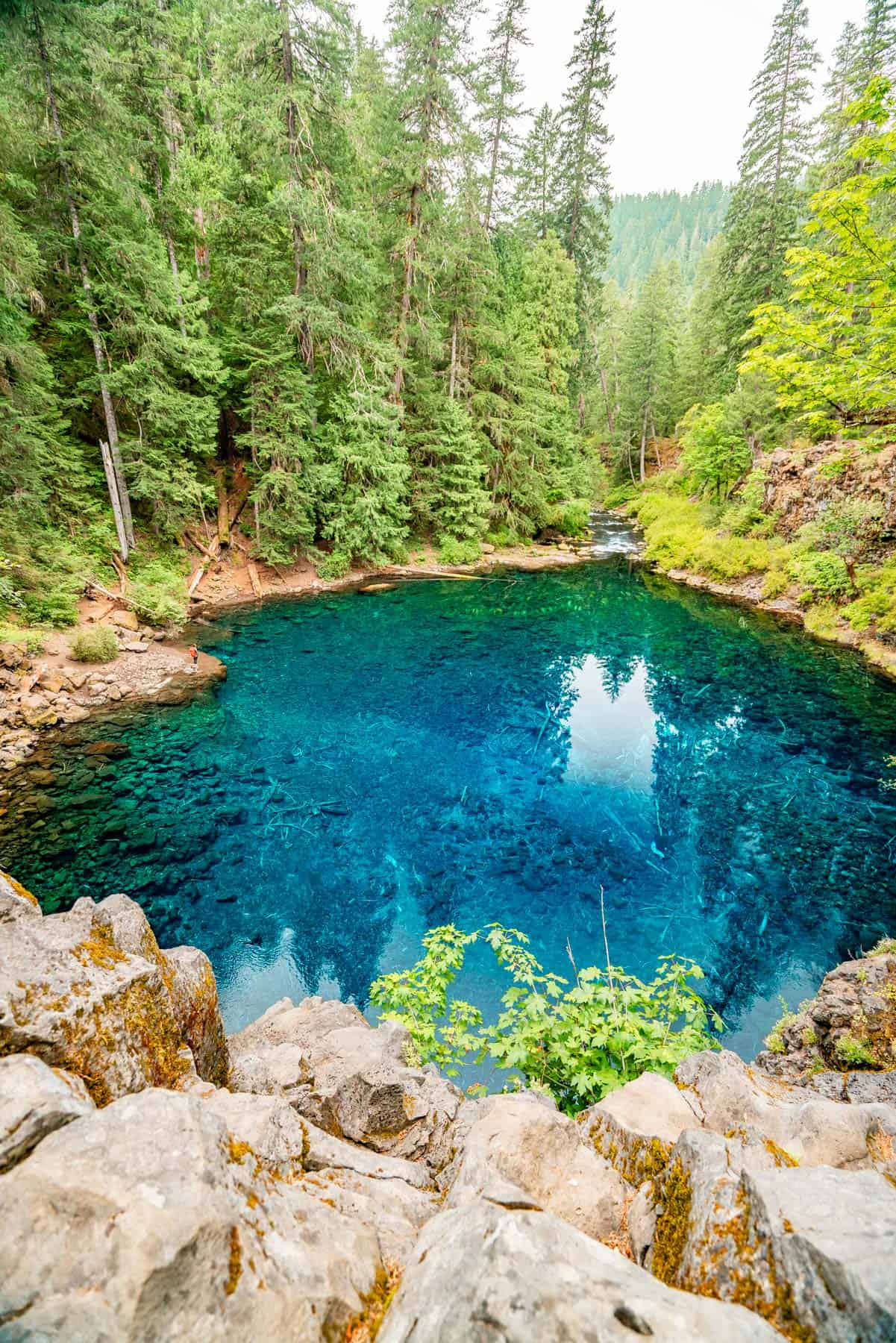Every new year is an invitation to new adventures. So where should you go in 2025?

There’s nothing more disappointing than going to an overcrowded national park. Instead of a life-restoring breath of fresh air, you get stuck in a three-hour bear jam, or have to dodge crowds of tourists on the trail.
There are so many OTHER incredible places in this country of ours, so this year we thought we’d highlight a handful from each region in the continental US: the West Coast (plus NV), Midwest, Mountain West, South and East Coast. We’ve polled the Parks Channel community and selected can’t-miss options for each region of the country. Our criteria: unforgettable destinations that are less crowded, less well-known (in most cases) and less difficult to secure the necessary permits.
The west coast has more national parks—California has nine—than just about any part of the country, and we highly recommend you add them to your life list. In the meantime, here are a few unsung heroes.
Have other suggestions? We want to hear them! A submission form is at the bottom of this post. And if your trip involves hotel stays, be sure to try out Parks Channel Member Travel. Free signup will give you access to discounts of up to 50%.
WASHINGTON
MOUNT RAINIER. Olympic might get more attention, but Mount Rainier holds the distinction of being the fifth national park in the United States and the first in the Pacific Northwest. It was established on March 2, 1899. The 14,411-foot mountain was named for an obscure British admiral. Better would have been Tahoma or Tacoma, the indigenous Puyallup and Nisqually names for it, meaning “the source of nourishment from the many streams.” Along with the ever-popular Paradise and Sunrise, check out:
• Spray Park – a trail bursting with wildflowers in spring.
• Tolmie Peak Fire Lookout – breathtaking views of the mountain.
• Gobblers Knob Fire Lookout – an excellent sunrise or sunset spot for photography.
PALOUSE FALLS STATE PARK. In southeastern Washington, this small park packs a punch in the form of a spectacular 198-foot waterfall, the legacy of cataclysmic events from the Ice Age 13,000-15,000 years ago. It’s part of the Ice Age National Geologic Trail. With minimal light pollution, Palouse Falls is an incredible spot for stargazing. Bring a telescope or simply lie back and enjoy the Milky Way on a clear night.
NORTH CASCADES. In 2024 the Wall Street Journal named it the second-best national park in the United States, citing its relatively low visitation and glorious landscapes. It’s a favorite of the back-country crowd but don’t feel you have to be hardy to explore it. For a sample itinerary and some must-see stops, check out this post from Beyond the Bucketlist. Alice Ford also captured a three-day hike worth watching.
LIME KILN POINT STATE PARK. One of the best land-based whale-watching spots in the world. Known locally as “Whale Watch Park,” this 42-acre gem offers breathtaking views of the Salish Sea. And the best part is, you can spot whales without setting foot on a boat. The park’s rocky shoreline provides prime viewing of southern resident orcas, which are often seen feeding and socializing in the waters just offshore. Gray whales, humpback whales, and minke whales also make appearances, especially during migration seasons. In the spring, just as the whales arrive, so do the wildflowers on shore. Summer is the best and most popular time to go whale watching though. Be sure to arrive early to secure parking.
For more options in the state of Washington, read our in-depth post here.
OREGON
DESCHUTES NATIONAL FOREST. A sprawling outdoor playground that covers over 1.6 million acres of diverse landscapes. From towering volcanic peaks to serene alpine lakes and dense pine forests, this natural wonderland offers endless opportunities for adventure. Top destinations:
• Newberry National Volcanic Monument: This unique area showcases the volcanic origins of the region. Visit Lava Butte for stunning vistas, explore the mile-long Lava River Cave, or hike around the massive Newberry Caldera, home to sparkling Paulina Lake and East Lake. Don’t miss the dramatic Paulina Falls, a picturesque double waterfall.
• Tumalo Falls: Just a short drive from Bend, Tumalo Falls is one of the most iconic waterfalls in Oregon. A short hike leads to a viewpoint, while longer trails take you deeper into the lush Deschutes backcountry.
• Cascade Lakes Scenic Byway: This 66-mile route winds through pristine forests and offers access to numerous alpine lakes, including Sparks Lake, Devils Lake, and Elk Lake. These are ideal spots for kayaking, paddleboarding, and fishing, with breathtaking views of nearby peaks like South Sister and Broken Top.

HONEYMAN MEMORIAL STATE PARK. A local favorite known for its iconic sand dunes, tranquil lakes, and dense coastal forests, this 2,000-acre state park provides a perfect base for those looking to explore the magic of Oregon’s coast. Part of the Oregon Dunes National Recreation Area, this vast expanse of shifting, golden sand stretches for miles, and features the state’s second-largest campground. Along with dune hiking you can go sandboarding and sledding, or kayak in the pristine waters of Sutton Lake. In the spring be on the lookout for pink rhododendrons.
BLUE POOL AND TAMOLITCH FALLS. A scenic 6.6-mile hike leading to one of Oregon’s most enchanting spots. The pool gets its stunning blue color from the underground springs that feed it, which have filtered through lava rock for centuries. The result is water that’s as clear as glass, with hues of blue and turquoise that seem to glow under the sun. The best time to visit is during the warmer months, typically between May and September, when the McKenzie River Trail is clear of snow and the weather is ideal for hiking. However, it’s important to note that the pool is extremely cold, even in the summer, and is not recommended for swimming, despite its inviting appearance.
For more recommended destinations in Oregon, read our in-depth post here.
CALIFORNIA
SEQUOIA & KINGS CANYON. Not to be bleak about it, but in an era of devastating wildfires, it feels like we should marvel at our tree companions while we can! Sequoia is a breathtaking reminder of nature’s grandeur, home to the some of the largest and oldest living organisms on Earth.
These ancient trees have stood for thousands of years, their thick, fire-resistant bark allowing them to survive and even thrive in the face of natural fires. However, as the 2020 burning of Big Basin Redwoods State Park showed, these majestic giants are threatened like never before.
Visiting the park in 2025 offers a chance to witness and appreciate these towering wonders while supporting preservation efforts to protect them for future generations. The iconic General Sherman Tree, over 2,200 years old, is still standing strong, but its survival depends on ongoing conservation. Late spring through early fall is the best time to experience the park’s beauty, with clear trails and optimal weather.
MOUNT TAMALPAIS STATE PARK. An easy drive north of San Francisco, this is an amazing destination for hiking and wildlife viewing. Known as the “crown jewel” of the Bay Area, “Mount Tam” offers sweeping views of the Pacific Ocean, San Francisco Bay, and the rugged coastal hills. In 2025, visitors can look forward to renewed trails, seasonal wildflower displays, and clear skies perfect for stargazing. The intrepid will no doubt want to trek the famous 14-mile out-and-back Dipsea Trail to Stinson Beach, but the less adventurous can simply enjoy a scenic picnic at the summit, or explore redwood groves and waterfalls. Mount Tam delivers experiences for all ages and abilities. There’s first-come, first served camping at two campgrounds.
ANTELOPE VALLEY CALIFORNIA POPPY RESERVE. Did you know that the state flower is the California Poppy? We didn’t either, but wildflower fans will definitely want to check out this state reserve from mid-February through May to witness “a mosaic of color that changes daily.” California State Parks also offers a helpful trail map showing levels of difficulty. Just please keep to the trails! Flower trampling is strictly prohibited.
NEVADA
VALLEY OF FIRE STATE PARK. Located just an hour from Las Vegas, this is a stunning desert landscape renowned for its fiery red sandstone formations, ancient petroglyphs, and breathtaking vistas. It was a stand-in for Mars in Arnold Schwarzenegger’s classic movie “Total Recall,” and even Elvis left the building to film shots there for “Viva Las Vegas.”
View this post on Instagram
A post shared by Spring Mountain Ranch State Park (@springmountainranch)
The park’s otherworldly terrain, shaped over 150 million years, offers visitors a chance to step into a world of vibrant colors, rugged beauty, and rich history. The Fire Wave Trail is a must-hike destination for anyone captivated by the beauty of the desert. This short, 1.5-mile round-trip trail leads you through stunning landscapes of red sandstone, pastel swirls, and dramatic rock formations that resemble waves frozen in time. The unique geology creates a vibrant tapestry of colors, especially during sunrise or sunset when the rocks seem to glow. Accessible and relatively easy, the trail is perfect for casual hikers and photographers, offering incredible opportunities to marvel at the surreal scenery. Whether you’re drawn to its natural artistry or the serene desert ambiance, the Fire Wave Trail provides an unforgettable experience highlighting the American Southwest’s unique beauty.
SPRING MOUNTAIN RANCH STATE PARK. Just a short drive from the Las Vegas Strip, Spring Mountain Ranch State Park offers a refreshing escape into Nevada’s high desert serenity. Right next to Red Rock Canyon National Conservation Area, this former working ranch once belonged to eccentric billionaire and Hollywood mogul Howard Hughes. It features some of the oldest buildings in the state, including an 1860s-era blacksmith shop. Visitors can explore the historic ranch house, stroll through lush meadows and orchards, and join guided tours that detail the park’s colorful history. Summer visitors can enjoy a variety of outdoor shows in the Super Summer Theatre. Flex tickets sell out fast though!
Top photo of Valley of Fire State Park, Nevada, by Casey Jarvis CC BY-SA 2.0 (@cjarv2010)
So what did we miss? If you've got a suggestion for 2025 travel we'd love to hear about it!
Please log in to Parks Channel to submit your post.

